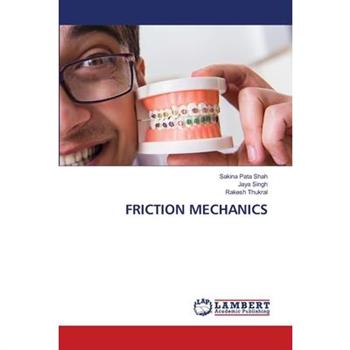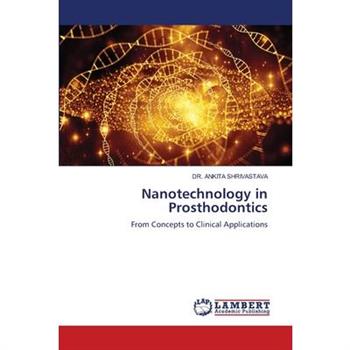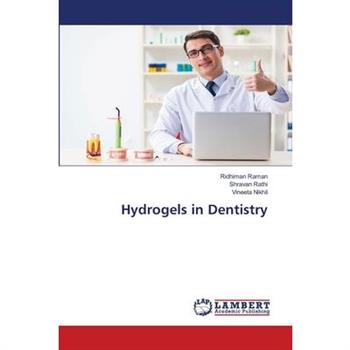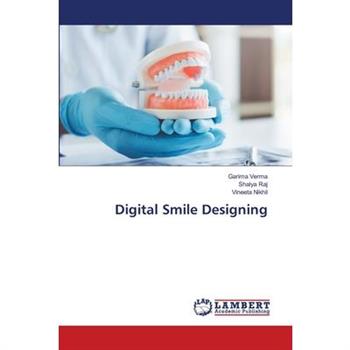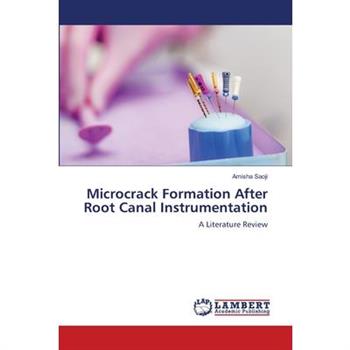Post Insertion Complication and Management of Complete Denture
Complete dentures improve the quality of life and restore function in edentulous patients2 Denture insertion represents the culmination of a series of carefully considered and lacking procedures on the part of the doctor. It is also the moment largely awaited by the patient who has co-operated in both time and efforts toward this event. Well-made dentures enable the patient to have comfort, adequate function and participation. These are the goals of denture insertion that are usually obtained, indicating a satisfying experience to both doctor and patient, amply repaying the skill and training of the former and the patience of the latter.
Imaging in Maxillofacial Trauma
Maxillofacial trauma refers to injuries affecting the face, jaw, and surrounding structures. These injuries can range from minor lacerations to severe fractures that impact breathing, vision, and speech. Causes include motor vehicle accidents, falls, sports injuries, and interpersonal violence. Imaging plays a crucial role in diagnosing maxillofacial trauma, as it helps assess fractures, soft tissue injuries, and other structural damage. Here are some of the best imaging techniques used: - Computed Tomography (CT): Considered the gold standard for maxillofacial trauma imaging, CT scans provide detailed cross-sectional images, making it easier to detect fractures and assess complex injuries.- Cone-Beam CT (CBCT): A specialized form of CT used in dental and maxillofacial imaging, CBCT offers high-resolution images with lower radiation exposure compared to conventional CT.- Magnetic Resonance Imaging (MRI): While not commonly used for fractures, MRI is valuable for evaluating soft tissue injuries, nerve damage, and vascular complications.- Ultrasound (US).
Recent Advances in Dental Ceramics
Dental ceramics are a diverse class of materials having chemical stability together with acceptable mechanical and optical properties. They are non-metallic, inorganic materials with a variety of uses. These materials have satisfactory resistance to tensile and shear stress, are highly aesthetically pleasing, and are biocompatible with tissue. Several advancements in new ceramic materials for dental restorations, like as processing methods and superior mechanical qualities, have been made in recent years. Consequently, ideas about the composition and fortification processes of dental ceramic materials are also covered. The dentist needs the most up-to-date information on indications, restrictions, and proper use of started materials. This book aims to provide an overview of developments in novel ceramic materials and techniques used in dentistry.
Rehabilitation of Hemi-mandibulectomy Defects
Hemimandibulectomy, the surgical resection of one lateral half of the mandible, results in significant functional and esthetic challenges. These include mandibular deviation, impaired mastication, speech difficulties, and facial disfigurement. Prosthetic rehabilitation plays a vital role in restoring these functions and improving the quality of life for affected patients. The management approach depends on the extent of resection, the presence or absence of remaining teeth, and whether the defect is reconstructed surgically. This review outlines various prosthetic strategies, including guidance flange prostheses, palatal ramps, mandibular guide prostheses, and definitive obturator or implant-supported prostheses. Early intervention with interim prostheses can help in muscle reprogramming and minimizing deviation. An interdisciplinary approach involving maxillofacial surgeons, prosthodontists, and speech therapists is essential for successful rehabilitation. The prosthetic management of hemimandibulectomy patients requires meticulous planning, patient-specific customization, and ongoing evaluation to achieve optimal functional and esthetic results.
Anterior Teeth Trauma
Traumatic dental injuries are acknowledged as a global public health issue, emphasizing the importance of education and prevention strategies worldwide. Traumatic injuries to anterior teeth can have significant consequences on oral health, aesthetics, and patient quality of life. Prompt and proper diagnosis, treatment, and follow-up care are crucial to achieve optimal outcomes. Changing lifestyle and requirements of modern society has led to an emergence of new patterns of dental trauma. To this end, a regular update of knowledge in dental traumatology is required.
Current Status of Gene Therapy in Periodontics
This book presents a comprehensive analysis of the application of gene therapy in dentistry. Gene therapy offers a paradigm shift by addressing oral diseases at the molecular level, aiming for preventive and regenerative outcomes. This book explores the multifactorial etiology of periodontitis, integrating microbial, environmental, genetic, and immunological components. Multiple disease progression models like the linear, burst, and dysbiosis based are reviewed to elucidate clinical variability. A detailed examination of genetic polymorphisms (eg, IL-1, IL-6, TNF-α) illustrates host susceptibility and pathogenesis. The book also evaluates gene-based therapeutic strategies, including immunomodulation and tissue regeneration, emphasizing the role of mesenchymal stem cells and advanced delivery systems. Ethical considerations and future research directions are discussed, positioning gene therapy as a promising frontier in personalized dental care. This publication aims to contribute meaningfully to dental sciences and biomedical research.
Digital Orthodontics
The Future of Precision in Smile Design is a comprehensive and forward-looking guide to the rapidly evolving world of orthodontics in the digital era. Designed for orthodontists, dental professionals, and students, this book explores how cutting-edge technologies-such as 3D imaging, CAD/CAM systems, digital treatment planning, clear aligners, artificial intelligence, and virtual simulations-are transforming diagnostics, treatment workflows, and patient outcomes.Blending foundational theory with practical applications, the book walks readers through the digital workflow from diagnosis to appliance delivery. It highlights evidence-based practices, showcases real-world clinical cases, and discusses emerging trends that are shaping the future of orthodontic care.Whether you're adopting digital tools for the first time or looking to refine an already tech-enabled practice, this resource offers valuable insights into the integration of innovation with clinical expertise-bridging the gap between traditional orthodontics and tomorrow's possibilities.
Personalized Periodontics
Personalized Periodontics: Tailoring Care for Individual Patients provides a comprehensive exploration of how personalized care can revolutionize the field of periodontics. By integrating genetic information, advanced diagnostics, and patient-centered approaches, periodontists can create customized treatment plans that are far more effective than traditional methods. This book aims to bridge the gap between cutting-edge research and clinical practice, offering both students and professionals the tools they need to provide better care to patients and advance the field of periodontology. The future of periodontics lies in understanding and addressing the unique needs of each patient, ensuring that every individual receives the best possible care for their specific condition.
Failures in Dental Implants
Failures in Dental Implants explores the multifactorial causes behind implant complications and failures, offering a practical and clinical perspective on one of the most challenging aspects of modern implantology. From surgical errors and prosthetic misjudgments to biological and patient-related factors, this book provides a detailed overview of where things can go wrong-and how to address them. Designed for both postgraduate students and practicing clinicians, the content is enriched with case discussions, evidence-based guidelines, and preventive strategies. By highlighting the lessons learned from failures, this book aims to foster better clinical outcomes and a deeper understanding of the complexities of dental implant treatment.
Diagnostic Aids In Prosthodontics
This book offers an exploration of diagnostic tools and techniques essential for accurate evaluation and treatment planning in prosthodontics. It begins with foundational knowledge such as history taking and diagnostic casts and progresses into advanced imaging modalities including CBCT, MRI, and 4D imaging. Emphasizing both conventional and digital innovations-from T-Scan occlusal analysis to resonance frequency evaluation and salivary diagnostics-it provides a structured approach to diagnosis across complete dentures, removable and fixed prostheses, implantology, and maxillofacial prosthetics. An essential resource for postgraduate students and clinicians aiming for precision in prosthodontic rehabilitation.
Inter-Occlusal Relations and Records
This book provides a detailed exploration of interocclusal relations and records, essential in prosthodontics and restorative dentistry. It begins with an overview of TMJ anatomy, muscles of mastication, and dentition, establishing the foundation for understanding mandibular dynamics. Emphasis is placed on centric relation (CR), centric occlusion (CO), and maximal intercuspation, with definitions traced through various editions of the Glossary of Prosthodontic Terms. The book differentiates physiological and functional interpretations of CR and introduces eccentric relations such as protrusive and lateral positions. Various interocclusal recording materials are reviewed, including waxes, ZOE, elastomers, and resins, along with advanced techniques like bimanual manipulation, Gothic arch tracing, Lucia Jig, and leaf gauge. It also highlights concepts like "freedom in centric" and the role of neuromuscular deprogramming. Concluding with clinical recommendations, it emphasizes the significance of accurate interocclusal records in denture fabrication, full-mouth rehabilitation, and implant prosthodontics.
Bone Grafts and Guided Tissue Regeneration in Furcation Defects
This book would provide an in-depth exploration of the technique used to promote the healing and regeneration of periodontal tissues, particularly in the treatment of periodontal disease. It would cover bone grafts and the biological principles behind GTR, the use of barrier membranes to direct the growth of specific tissue types (such as bone and soft tissues), and the materials and technologies involved. The book would likely discuss clinical indications, step-by-step procedures, patient selection, outcomes, and potential complications. It may also include case studies and advancements in bone grafts and GTR techniques to improve treatment success in periodontal regeneration.
Mechanism of Bone Destruction
Bone destruction is central to conditions like osteoporosis, rheumatoid arthritis, and cancers with bone metastases. It results from an imbalance between bone resorption by osteoclasts and formation by osteoblasts. Osteoclast activity is regulated by the RANK/RANKL/OPG axis, where an increased RANKL/OPG ratio promotes osteoclastogenesis. Inflammatory cytokines (e.g., TNF-α, IL-1, IL-6) enhance RANKL expression and osteoclast survival. In cancer, tumor-derived factors like PTHrP and prostaglandins further drive RANKL-mediated bone loss. Bone resorption releases growth factors such as TGF-β, fueling tumor growth and perpetuating degradation. Enzymes like MMPs and cathepsin K degrade bone matrix, while hypoxia and mechanical stress also contribute. Understanding these mechanisms supports treatments like bisphosphonates, RANKL inhibitors (e.g., denosumab), and anti-cytokine therapies, which effectively reduce bone loss.
The Periodontal Recovery Guide
This systematic review explores the effectiveness of eugenol versus non-eugenol periodontal dressings in promoting healing after periodontal surgeries. Eugenol dressings offer antimicrobial and analgesic benefits but may cause irritation or allergic reactions, while non-eugenol dressings like Coe-Pak are safer, more comfortable, and widely accepted. Analyzing data from 15 clinical studies, the review highlights that non-eugenol dressings generally provide better patient comfort with fewer side effects, though the choice of dressing should be individualized based on patient needs and surgical context. This evidence-based work is a valuable guide for clinicians aiming to enhance post-surgical outcomes in periodontics.
Evolution and Recent Advances in Osseointegrated Supported Prosthesis
Oral or Dental Implants have opened the door to the 21st century in dentistry and oral rehabilitation. They have increased the treatment possibilities for patients and improved the functional results of their treatment. Patients who had to compromise their esthetic appearance, chewing functionality and nutritional intake due to complete or partial tooth loss can now be restored back to various degrees of normal esthetics and functions.
From Exposure to Coverage
The subepithelial connective tissue graft (SCTG) is a trusted, time-tested technique for reversing gingival recession and restoring healthy smiles. By gently harvesting connective tissue, usually from the palate and placing it beneath the receded gum line, SCTG promotes natural root coverage, strengthens gingival thickness, and enhances both esthetics and durability. With its high success rate and predictable outcomes, SCTG remains a gold standard in periodontal therapy, offering patients long-term stability and a confident, revitalized smile.
Personalized Periodontics
Personalized periodontics is a patient-centered approach that customizes periodontal care based on an individual's unique risk factors, including genetics, microbiome profile, systemic health, and lifestyle. This approach shifts from traditional, standardized treatment protocols to precision-based strategies, allowing for more accurate diagnosis, targeted therapies, and improved disease prevention and management. By embracing advancements in genomics, diagnostics, and digital technologies, personalized periodontics aims to enhance treatment outcomes, reduce recurrence, and support long-term oral and systemic health.
Elastomers in Orthodontics
Elastics and Elastomeric are routinely used as an active component of orthodontic treatment. Elastics have been a valuable adjunct of any orthodontic treatment for many years. There use, combined with good patient cooperation, provides the clinician with the ability to correct both antero-posterior and vertical discrepancies. The latex elastics have become integral part of orthodontics. From a clinician view it would be mandatory not only to know the clinical aspect of these elastics but also their basic properties, in order to extract the most out of these polymers.
Deep Marginal Elevation and Acquisition
Minimally invasive dentistry focuses on preserving tooth structure through biomimetic restorations that replicate natural teeth both aesthetically and functionally. Deep carious lesions extending below the gingival margin pose clinical challenges like compromised isolation, moisture control, bonding, and impression accuracy. Restorations beyond the cemento-enamel junction risk biological width violation, potentially causing periodontal issues. Deep Margin Elevation and Acquisition (DME&A) offers a conservative solution by elevating subgingival margins using composite resin, improving rubber dam isolation, bonding, and impressions while safeguarding periodontal health. When combined with immediate dentin sealing, DME&A boosts bond strength, marginal integrity, and cusp reinforcement, facilitating optimal adhesive restorations. Research shows DME&A, if performed with proper isolation, is periodontally safe and clinically successful.
Molar Incisor Hypomineralisation
Molar Incisor Hypomineralisation (MIH) is a developmental condition affecting the enamel of one or more of the first permanent molars, often accompanied by involvement of the permanent incisors. It results from a disturbance during enamel formation, leading to enamel that is softer, porous, and less mineralized than normal. Clinically, MIH is characterized by well-defined opacities on the enamel, ranging in color from white to yellow-brown, and may be associated with increased sensitivity or post-eruptive enamel breakdown. Although the exact cause is unknown, it is believed to be linked to systemic factors during early childhood, such as illness or environmental stress. MIH can pose challenges in both diagnosis and treatment due to the fragile nature of the enamel and its poor response to restorative materials.
Ultrasonics in Endodontics
From this thorough exploration into the realm of library dissertation, it is evident that clinicalendodontics has undergone a significant transformation owing to the integration of ultrasonictechnology (US). Traditionally, endodontic treatments faced numerous challenges, particularlywhen practitioners needed to navigate restricted access areas due to the limitations of specificangles or tip designs during the removal of tooth structure. These challenges often resulted inincomplete procedures and compromised outcomes.The adoption of ultrasonic devices has brought about a notable change, offering cliniciansimproved visualization capabilities alongside a more conservative approach to tooth structureremoval. This has been instrumental in increasing the opportunities for procedural success. Oneof the most remarkable advancements facilitated by US technology is the refined access to theroot canal system. Ultrasonic tools enable precise identification and navigation of calcifiedcanals, which are often difficult to detect and treat with conventional methods. Additionally, these tools are highly effective in the efficient extraction of separated instruments or posts.
The Teeth
"The Teeth: Their Formation, Diseases & Treatment" by Thomas Gaddes offers a comprehensive guide to dental health for the general public. This book explores the formation of teeth, common dental diseases, and various treatment options. Written in accessible language, it serves as both a scientific resource and a practical manual for maintaining oral hygiene.Gaddes provides insights into preventative care and the importance of regular dental check-ups. Readers will gain a deeper understanding of how to protect their teeth and gums, making this book a valuable addition to any home library, promoting better dental health for individuals and families alike.This work has been selected by scholars as being culturally important, and is part of the knowledge base of civilization as we know it. This work was reproduced from the original artifact, and remains as true to the original work as possible. Therefore, you will see the original copyright references, library stamps (as most of these works have been housed in our most important libraries around the world), and other notations in the work.This work is in the public domain in the United States of America, and possibly other nations. Within the United States, you may freely copy and distribute this work, as no entity (individual or corporate) has a copyright on the body of the work.As a reproduction of a historical artifact, this work may contain missing or blurred pages, poor pictures, errant marks, etc. Scholars believe, and we concur, that this work is important enough to be preserved, reproduced, and made generally available to the public. We appreciate your support of the preservation process, and thank you for being an important part of keeping this knowledge alive and relevant.
The Teeth
"The Teeth: Their Formation, Diseases & Treatment" by Thomas Gaddes offers a comprehensive guide to dental health for the general public. This book explores the formation of teeth, common dental diseases, and various treatment options. Written in accessible language, it serves as both a scientific resource and a practical manual for maintaining oral hygiene.Gaddes provides insights into preventative care and the importance of regular dental check-ups. Readers will gain a deeper understanding of how to protect their teeth and gums, making this book a valuable addition to any home library, promoting better dental health for individuals and families alike.This work has been selected by scholars as being culturally important, and is part of the knowledge base of civilization as we know it. This work was reproduced from the original artifact, and remains as true to the original work as possible. Therefore, you will see the original copyright references, library stamps (as most of these works have been housed in our most important libraries around the world), and other notations in the work.This work is in the public domain in the United States of America, and possibly other nations. Within the United States, you may freely copy and distribute this work, as no entity (individual or corporate) has a copyright on the body of the work.As a reproduction of a historical artifact, this work may contain missing or blurred pages, poor pictures, errant marks, etc. Scholars believe, and we concur, that this work is important enough to be preserved, reproduced, and made generally available to the public. We appreciate your support of the preservation process, and thank you for being an important part of keeping this knowledge alive and relevant.
Management of Obstructive Sleep Apnea - A Multidisciplinary Team Approach
Obstructive sleep apnea (OSA) is a common medical condition that can have serious health consequences for both adults and children. It can lead to various complications, such as cardiovascular diseases, metabolic syndrome, stroke, and type two diabetes. Many OSA patients often experience persistent drowsiness before their condition is diagnosed and treated, which can result in accidents while operating heavy machinery or driving on the road.OSA in pediatric patients is often underdiagnosed despite its association with significant morbidity categories, such as neurobehavioral, cardiovascular, and somatic growth.Screening for obstructive sleep apnea (OSA) should be prioritized as much as screening for other chronic diseases. The best and most cost-effective way to manage OSA is by incorporating a multidisciplinary team model with various medical and dental specialties.Every healthcare facility should prioritize early diagnosis and intervention of OSA to save time and money spent in operating rooms and intensive care units.This book illustrates an innovative multidisciplinary treatment pathway that aims to provide high-quality and cost-effective healthcare for adults and children with OSA in any healthcare facility.
Potentially Malignant Oral Disorders
Potentially Malignant Oral Disorders (PMODS) represent a group of conditions of the oral mucosa that carry an increased risk of transformation into malignancy, most commonly oral squamous cell carcinoma. These lesions, including leukoplakia, erythroplakia, oral lichen planus, oral submucous fibrosis, and actinic cheilitis, often exhibit clinical and histopathological features that serve as early indicators of carcinogenic potential. Early detection and intervention are critical, as the progression to malignancy can be mitigated with appropriate clinical surveillance and management. This abstract provides an overview of the aetiology, risk factors, diagnostic approaches, and current therapeutic strategies associated with PMODs. Emphasis is placed on the role of biopsy and histopathological grading of epithelial dysplasia, as well as lifestyle modifications, such as tobacco and alcohol cessation, which are pivotal in reducing disease progression. A multidisciplinary approach, involving dental professionals, pathologists, and oncologists, is essential for optimal patient outcomes.
Magnification in Pediatric Dentistry
Magnification tools revolutionize pediatric dentistry by enhancing precision, visibility, and ergonomics. Devices like loupes, dental operating microscopes, and endoscopes enable accurate diagnosis and treatment of dental conditions, ensuring minimally invasive care and improved outcomes. Despite challenges such as cost and learning curves, advancements in technology have solidified magnification as an essential component of modern dental practice. This book explores their evolution, applications, and impact on clinical excellence in pediatric dentistry.
Self Healing Dental Composites
The SHDC is based on an existing self-healing material model and uses biocompatible, cement-forming chemistry and stronger silica microcapsules. It heals cracks by forming a clinically tested dental restorative material, glass ionomer cement (GIC). In Self Healing Dental Composites (SHDCs), GIC (Glass ionomer cement) is produced when two healing components, "healing powder (HP)" and "healing liquid (HL)," come into contact and react. The healing of engineered composite materials, such as self-healing dental composites(SHDCs), has primarily focused on the recuperation of fracture toughness after activation of the polymer catalyst. As a result, evaluations of the self-healing efficiency of dental composites have primarily been focused on fracture toughness. However, bulk failure of the restoration can occur due to fast fracture, and cracks can reach a critical length due to cyclic crack extension.
Biomechanics in Dental Implant
The vital significance that biomechanical concepts play in the longevity and success of dental implants is examined in Biomechanics in Dental Implants. The book offers a thorough analysis of the ways in which mechanical forces interact with prosthetic components, bone structures, and implant materials to affect clinical outcomes. Important subjects include load transfer processes, occlusal concerns, implant design and surface properties, stress distribution, and the effects of bone quantity and quality. This book is a useful tool for dental students, professionals, and researchers who want to learn more about the biomechanical aspects of implant dentistry by fusing scientific theory with practical practice. It provides helpful advice for maximising implant placement and function while lowering problems and failure risks. It is well-illustrated and based on recent research.
Airway Management in Oral and Maxillofacial Surgery
Airway management in maxillofacial surgery is vital due to the anatomical complexities and high risk of airway compromise. This review highlights the importance of thorough preoperative assessment, tailored intraoperative strategies (including various intubation and surgical airway techniques), and vigilant postoperative care. Extubation is a critical phase requiring careful planning. A multidisciplinary, evidence-based approach is essential to ensure patient safety and optimize outcomes.
Assessment of Endodontic Treatment Outcomes
Assessment of endodontic treatment outcomes has evolved from disease-based criteria proposed by Strindberg to patient-centred values, emphasising survival and function of endodontically treated teeth even in the presence of inflammatory peri-apical disease. It is essential that patients are fully informed of the distinction between disease-free and disease-associated treatment outcomes. Ideally, disease-free treatment outcomes should always be the goal of all endodontic treatments.Treatment success can be based on a variety of factors including but not limited to symptom resolution, the healing of peri-apical tissues per radiograph, or even histologic evidence showing the absence of infected cells. Patients, on the other hand, may define success differently than practitioners. A patient's 'definition' of success may be the absence of pain or increased functionality of the tooth. Patients want treatment options that are proven to produce results in a timely and feasible manner that will last. The use of the PAI for evaluating treatment results has been advised because it is a reliable and valid way for denoting a healthy peri-apex and hence, scientific evidence of 'success'.
Nanotechnology in conservative dentistry and endodontics
Nanotechnology has significantly impacted the field of conservative dentistry and endodontics, introducing innovative approaches to diagnostics, treatment, and preventive measures. At the forefront of this revolution is the application of nanomaterials, which operate at the nanoscale, offering distinct advantages in terms of enhanced mechanical properties and targeted therapeutic effects.In the realm of diagnostics, nanotechnology has facilitated the development of advanced imaging techniques that provide unparalleled precision in detecting early-stage dental issues. Nano-sized contrast agents and sensors enable clinicians to identify subtle structural changes, allowing for proactive intervention and more effective treatment planning.When it comes to treatment, nanomaterials have revolutionized restorative dentistry by improving the properties of dental materials. Nano-composites, for instance, exhibit superior strength, durability, and aesthetics compared to traditional materials. This translates to longer-lasting dental restorations with reduced risk of fractures or wear.Nanoparticles also play a crucial role in the realm of endodontics.
The Relationship Between Climate Change and Dentistry
The relationship between climate change and dentistry is a critical area that highlights the need for the dental profession to integrate sustainability into its practices. Climate change impacts every aspect of life, including health, and the dental field is no exception. The environmental footprint of dentistry, from the use of materials and energy consumption to waste production, contributes to the broader issue of environmental degradation. Recognizing this, it is essential for dental professionals to adopt more sustainable practices that reduce their impact on the environment. Dental practices play a key role in mitigating climate change by reducing waste, conserving energy, and using eco-friendly materials, which lowers the environmental impact of care. These efforts not only combat climate change but also foster healthier communities. Climate change is affecting oral health, with shifts in weather and extreme events increasing dental disease risks, especially for vulnerable populations. This highlights the need for equitable dental care, ensuring everyone has access to necessary treatments and resources amid these challenges.
Irrigating Solutions & Techniques
Dentistry is a art which improve our smile and build our confident. Dentistry like other sciences in dynamic and requires an original approach from a writer for a major thrust in research. This book on Irrigating solutions and techniques is being presented in a new light. This book has been provide thoroughly in order to familiarize the students with what they usually do not get to learn otherwise. Keeping in view the depth and importance of the irrigation, the topics are presented as separate chapters. To make the text more illustrative and easy to retain, a lot of colorful pictures have been added. This book provide complete knowledge about irrigation protocol in adult patients or in pediatric patient. The book has well complied chapters which are formatted in an easy to follow manner. It will definitely provide a source of information to graduates and post graduates.
Orthodontic Softwares Used in Treatment Planning of Aligners
The integration of digital technologies and advanced software has revolutionized orthodontic care in India, aligning with the broader goals of the Digital India initiative. These innovations enhance treatment efficiency, improve patient comfort, and enable superior clinical outcomes. High-quality clear aligner software, in particular, plays a crucial role in helping orthodontists deliver exceptional care while streamlining workflows. Overall, digital advancements have proven to be highly beneficial for orthodontists, patients, and the field of clinical dentistry as a whole.
Crown Lengthening
A smile significantly influences perceptions of attractiveness, confidence, intelligence, and trustworthiness. One key factor affecting smile aesthetics is excessive gingival display, commonly referred to as a "gummy smile," often caused by altered passive eruption (APE) or other dental etiologies such as tooth malformations or subgingival fractures. Crown Lengthening Surgery (CLS) is a widely adopted periodontal procedure aimed at exposing more of the tooth structure for functional or esthetic purposes. First introduced by D.W. Cohen in 1962, CLS involves repositioning the gingival margin and often includes soft and/or hard tissue removal. Indications for CLS can be broadly categorized into prosthetic, esthetic, and restorative needs. Techniques for crown lengthening have evolved from conventional apically positioned flaps and osseous resection to modern approaches incorporating electrocautery, piezosurgery, lasers, cryosurgery, and chemosurgery. These methods offer varying degrees of precision, hemostasis, and patient comfort. Recent advances include the use of CAD-CAM technology for enhanced surgical accuracy through customized digital guides.
management of complex cases in complete denture
The management of complex cases in complete denture prosthodontics requires a multidisciplinary and individualized approach. These cases often involve anatomical, functional, or psychological challenges that go beyond standard protocols. Common complexities include severe alveolar ridge resorption, maxillomandibular discrepancies, soft tissue abnormalities, and patients with a history of unsuccessful prosthetic experiences.A thorough clinical evaluation is essential, incorporating detailed medical and dental histories, radiographic assessments, and functional analysis. Special attention must be given to the patient's expectations, adaptive capacity and psychological disposition, as these factors significantly influence treatment outcomes.Technical precision is critical in such cases. The use of advanced impression techniques, customized occlusal schemes, and precise jaw relation records can significantly improve denture stability and comfort. In some instances, adjunctive surgical procedures or implant-supported prostheses may be necessary to achieve optimal results.Ultimately, successful management depends on clear communication, patient education, and a strong clinician-patient.
Persistent Oral Habits
In clinical orthodontics and in the study of growth and development of the dentition, an understanding of the effects of the enveloping musculature upon the conformation of the dental arches into which the individual elements of the dentition fit is of great importance. Presence of an oral habit in the 3 to 6 years old child is an important finding during the clinical examination. An oral habit is no longer considered normal for children near the end of this age group. Efforts to discourage the habit may involve as little as a conversation between the dentist and the child or they may involve more complex appliance therapy. The role played by the orofacial musculature in the shaping of the dentition has long attracted the interest of orthodontists. Deleterious habitual patterns of muscle behavior, often are associated with perverted or impeded osseous growth, tooth malposition, disturbed breathing habits, difficulties in speech, upset balance in the facial musculature and psychological problems. Therefore, one cannot correct malocclusion without involvement in such reflex activities. This book elaborates the etiology, effect and management of various persistent oral habits.
Basic Concept of Research
Research is an integral part of any academic and non-academic learning, innovations, and developmental activities. Research is being done in all academic and developmental institutions but does not meet the expected level of scientific methodology. Moreover, the researches carried out are not need based, and lack in quality. The research should be directed towards major public health problems. Medical and health curricula at undergraduate level do not deal with applied basic scientific aspect of research methodology. There is need to create awareness and impart training in research to undergraduate, postgraduate and health sciences students and professionals so as to motivate them for need-based quality research in desired areas. It is an essential and powerful tool in leading man towards progress. Without systematic research there would have been very little progress. In academics, research can take many forms such as pure theoretical research, applied research, exploratory or grounded research, explanatory research, quantitative research, qualitative research, empirical research, desk research, field research, and mixed research.
Management of Cleft Lip and Cleft Palate in Indian Population
The book is all about mangement of cleft lip and palate in indian population .Cleft lip and palate are complex anomalies with significant medical, psychological, and social implications. Their management requires early diagnosis, precise classification, multidisciplinary care, and long-term follow-up. Despite historical stigmas, advancements in medical science have made cleft care highly effective, offering affected individuals the potential for a normal life. Continued public awareness, improved prenatal care, and access to cleft centers are key to reducing the burden of this condition.Cleft lip and palate (CLP) are among the most common congenital deformities, resulting from the failure of facial structures to fuse during early fetal development. These anomalies may occur individually or together and affect 1 in every 700 live births globally. In India, nearly 28,600 children are born with clefts each year, highlighting the significant public health burden.
Principles and Applications of Periodontal Regeneration
Periodontal Regeneration is a comprehensive guide that bridges the gap between scientific understanding and clinical application in the restoration of periodontal tissues. Beginning with a concise overview of the historical evolution of regenerative therapies, the book traces key milestones that have shaped current practices. It explores the biological principles of regeneration and the role of biomaterials, growth factors, and stem cells. With contributions from leading experts, it presents evidence-based strategies for predictable outcomes in managing periodontal defects. Designed for students, clinicians, and beginners, this book provides a practical and scholarly foundation for advancing periodontal care through regenerative approaches.
CRANIAL NERVES I to VI [PART 1]
This book gives a detailed picture of neuroanatomy, basics and embryology. It provides a valuable insight and comprehensive knowledge of cranial nerves. It throws a light on clinical examination and nerve testing. The clinical syndromes associated with the cranial nerves are described in this book. Knowledge of the anatomy of the nervous system (neuroanatomy) is needed by the dental practitioner for several reasons. The nervous system is the most complex, widely investigated and least understood system in the body. Probably the most obvious of these is that a full understanding of the cranial nerves innervating the maxillofacial region is not possible without reference to their connections. This itself demands a wide knowledge of the central nervous system. In addition the practitioner will frequently encounter patients' suffering from one or other of the many diseases affecting the central and peripheral parts of the nervous system. Satisfactory management of these patients requires some understanding of their illness which in turn requires knowledge of the general structure of the nervous system.
Friction Mechanics
Friction, a clinical challenge particularly with sliding mechanics, must be dealt with efficiently to provide optimal orthodontics results. Friction is a force that retards or resists the relative motion of two objects in contact. The direction of fiction is tangential to the common boundary of the two surfaces in contact (Drescher et al, 1989)1. As two surfaces in contact slide against each other, two components of total force arise: the fictional component (F) is parallel but in opposition to the sliding motion, and the normal force (N) perpendicular to the contacting surfaces and to the fictional force component.During mechanotherapy involving movement of the bracket relative to the wire, friction at the bracket-wire interface may prevent the attainment of optimal force levels in the supporting tissues. Therefore, a decrease in frictional resistance tends to benefit the hard and soft tissue response. It has been proposed that approximately 50% of the force applied to slide a tooth is used to overcome friction. Other factors that affect frictional resistance include saliva, arch-wire dimension and material, angulation of the wire to the bracket, and mode of ligation.
Reviving the Pulp
This book offers a comprehensive introduction to regenerative endodontic procedures, focusing on the biological basis, clinical protocols, and practical applications involved in revitalizing the pulp-dentin complex. It covers essential topics such as case selection, disinfection strategies, scaffold materials, and the role of stem cells and growth factors in tissue regeneration. Designed for dental students, clinicians, and researchers, the book bridges the gap between foundational science and clinical practice, providing evidence-based insights and step-by-step guidance. Through simplified explanations and up-to-date knowledge, it aims to enhance understanding and implementation of regenerative endodontic therapy in both immature and mature teeth.
Lasers in Endodontics
'LASER' is an acronym of 'Light Amplification by Stimulated Emission of Radiation'. Its theoretical basis was postulated by 'Albert Einstein'A laser is a device that transforms light of various frequencies into a chromatic radiation in the visible, infrared, and ultraviolet regions with all the waves in phase capable of mobilizing immense heat and power when focused at close range. The intraoral use of lasers, when used efficaciously and ethically is an exceptional modality of treatment for many clinical conditions that dentists or dental specialists treat on a daily basis.
Nanotechnology in Prosthodontics
Nanomaterials have been playing a significant role in basic scientific innovation and clinical technological change of Prosthodontics. It shows that many properties such as modulus of elasticity, surface hardness, polymerization shrinkage, and filler loading, of materials used in prosthodontics can be significantly improved after their scales were reduced from micron-size into nano size by nanotechnology and that the performances of composites can also be enhanced by adding appropriate nanomaterials. Nano science is a new approach and will bring changes in fields of medicine, dentistry, research, and healthcare. It will help dentists with more equipment, drugs and precision-made materials by which patient compliance is enhanced.
Hydrogels in Dentistry
Oral diseases, characterized by microbial infections, inflammation and tissue destruction, remain a global health challenge. Despite advances in dental medicine, existing materials limit effective treatment and tissue regeneration. Biomaterials have evolved from passive structures to bioactive materials that restore oral function. Among these, hydrogels stand out for their biocompatibility, porosity, and viscoelasticity, mimicking the extracellular matrix to support cellular attachment, proliferation and differentiation.Since their early mention in 1894, hydrogels have evolved significantly. The first synthetic hydrogel, polyhydroxyethylmethacrylate (pHEMA), appeared in 1960. Research later expanded to smart hydrogels responsive to stimuli, injectable hydrogels for drug delivery and super porous hydrogels for rapid absorption. Recent DNA hydrogels integrate molecular programmability for precise biomedical use. These innovations enhance hydrogels' role in drug delivery, biosensing, and regenerative medicine, revolutionizing oral and craniofacial treatments. Their adaptability cements them as key materials in modern dental biomaterials research.
Digital Smile Designing
Digital Smile Designing explores the integration of digital technology into modern dental aesthetics. This book provides a comprehensive overview of Digital Smile Design (DSD), a cutting-edge approach that combines facial analysis, digital imaging, and computer-aided design to create personalized, predictable, and functional smiles. It covers the theoretical foundations, practical applications demonstrating how digital workflows enhance diagnostics, treatment planning, and patient communication. Aimed at dental professionals, the book serves as a practical guide to adopting DSD techniques and elevating the standard of care in aesthetic dentistry.
Microcrack Formation After Root Canal Instrumentation
The development of rotary files and other endodontic instruments techniques have revolutionised treatment by enhancing canal preparation and producing rounder, smoother canals and are constructed of nickel-titanium alloy. These instruments have two types of movements: rotary continuous and reciprocating. Continuous movements, which involve torsion and flexion, can lead to instrument fracture. To avoid this, an alternative approach is proposed that is reciprocating movement. This literature review compares dentinal crack formation in root canal walls using stainless steel and nickel titanium rotary systems, highlighting potential complications like tooth fracture and increased bacterial susceptibility, due to contact between instruments and dentinal walls.





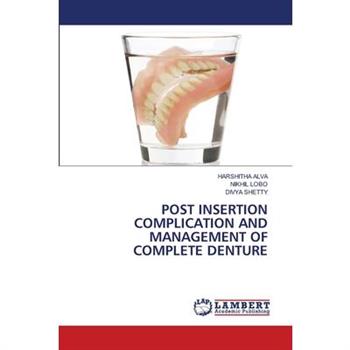
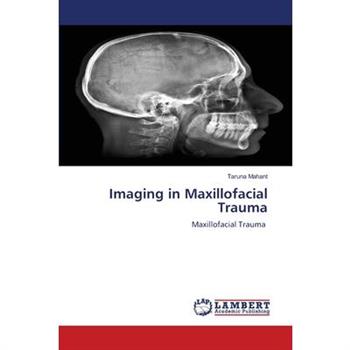

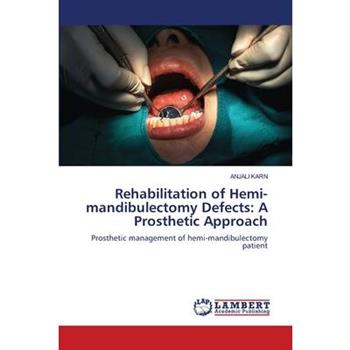
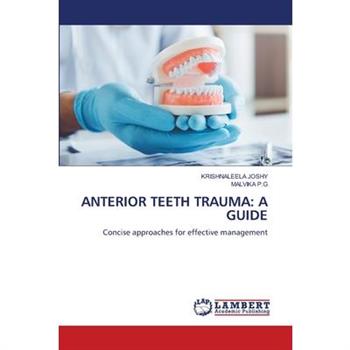
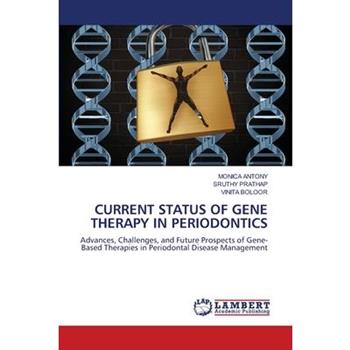


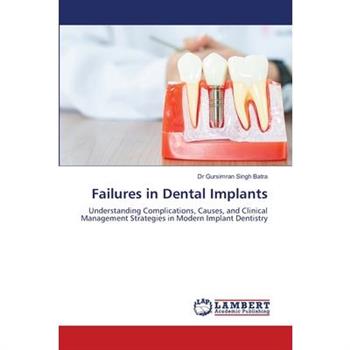


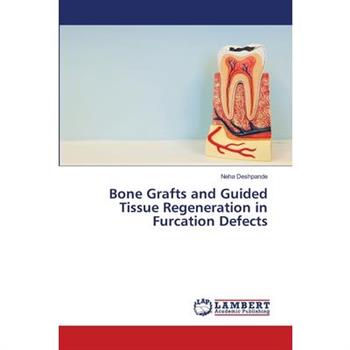

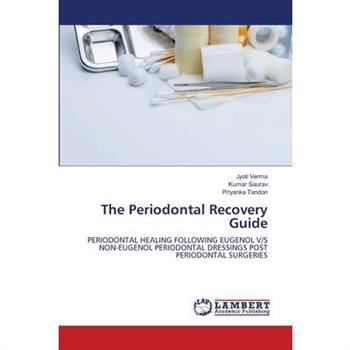
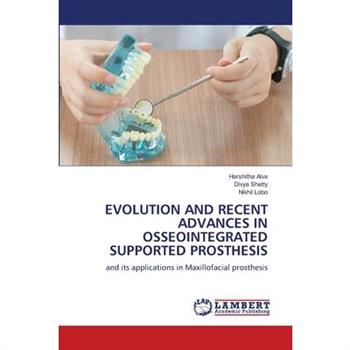
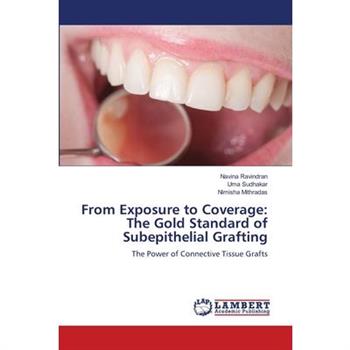
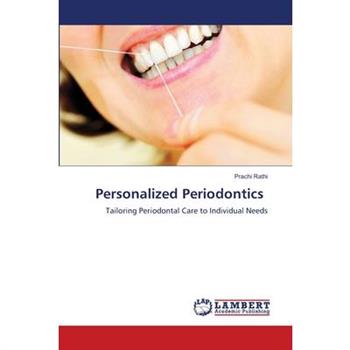

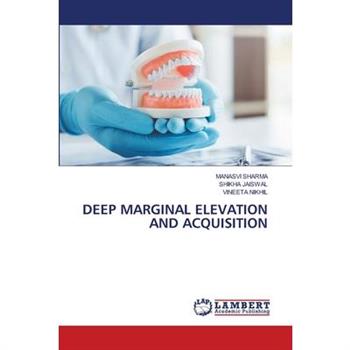
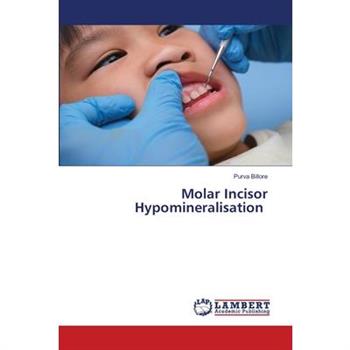



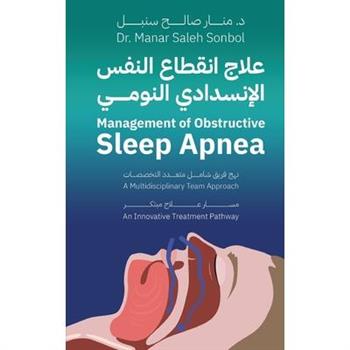
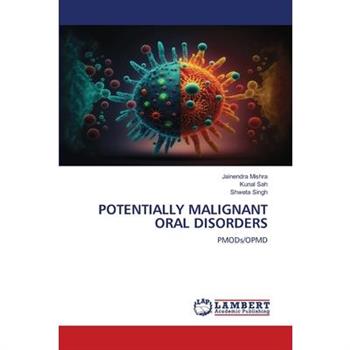

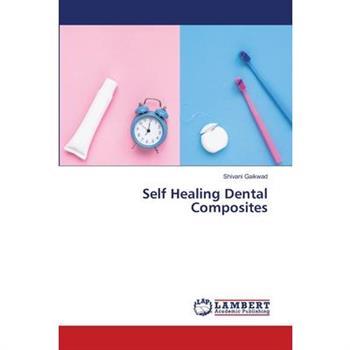

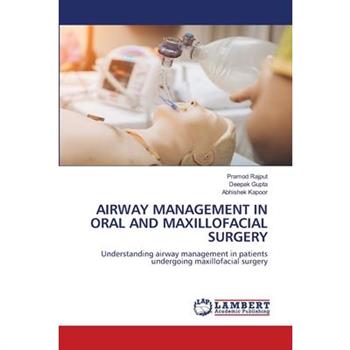
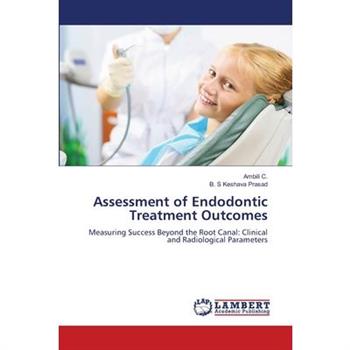
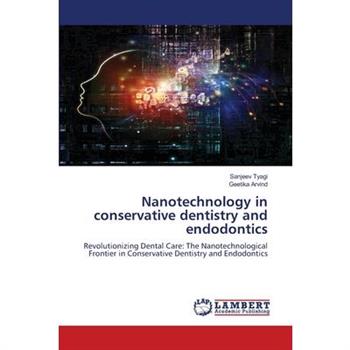
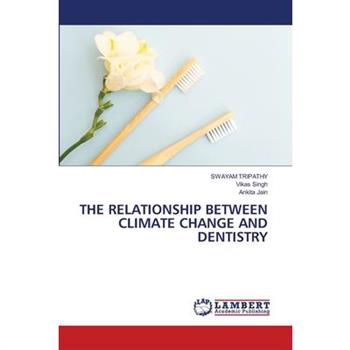
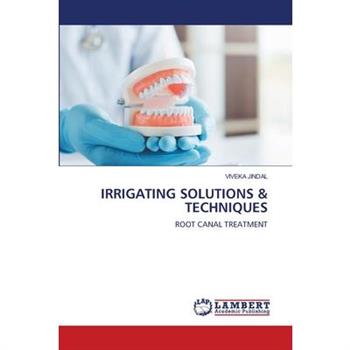

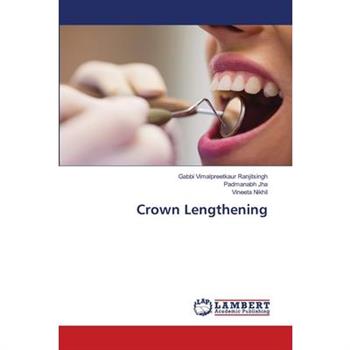
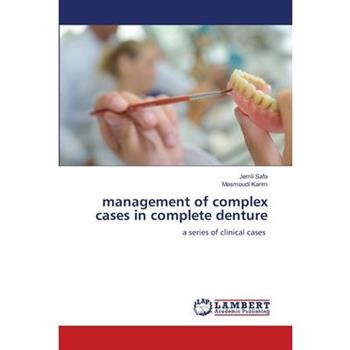
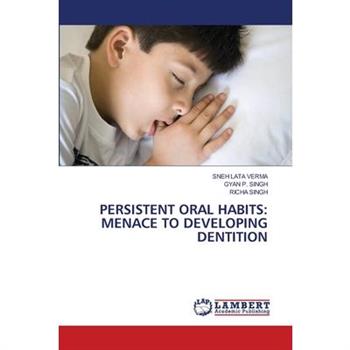
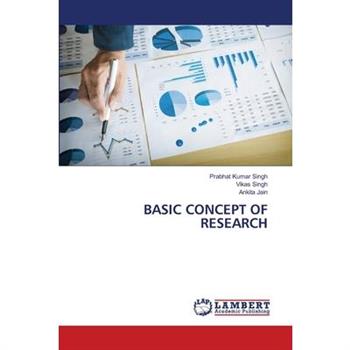
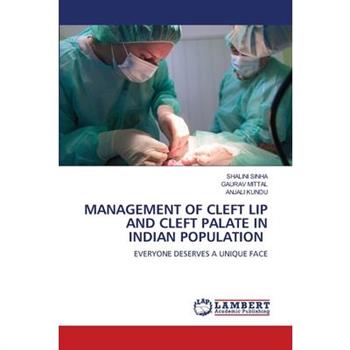
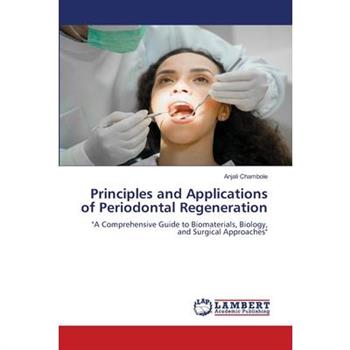
![CRANIAL NERVES I to VI [PART 1] CRANIAL NERVES I to VI [PART 1]](https://cdn.kingstone.com.tw/english/images/product/4783/9786208224783m.jpg?Q=61955)
